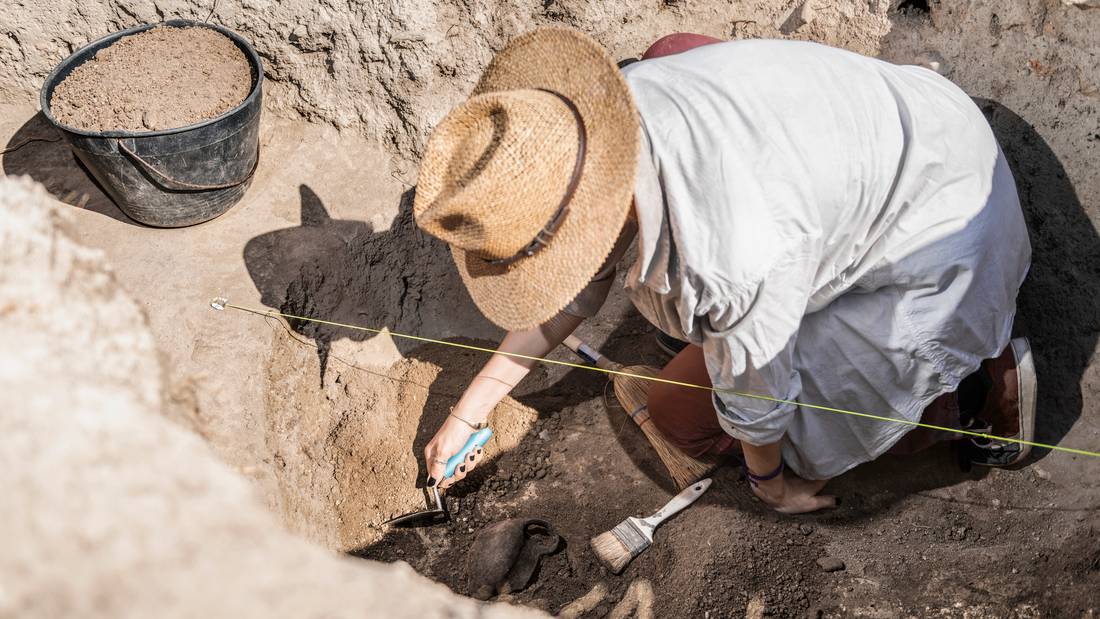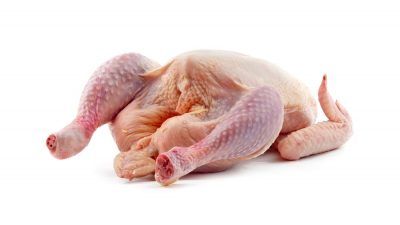4 studies that show the real paleo diet was plant-based

The paleo diet has become synonymous with a low-carb, high-meat dietary pattern. It’s based on the misguided idea that our ancient ancestors ate this way and therefore, to be the ultimate human, we should do the same. However, if people really want to eat a paleo diet, they should pay heed to these four studies, which suggest our ancestors were far more plant-based than the paleo community would like to believe.
1. Carbs were the real brain food
It is often claimed that it was early human’s appetite for meat that led to our rapid brain growth. However, Dr Karen Hardy from the Catalan Institution for Research and Advanced Studies, along with an international team of experts on human evolution, genetics and environment, pulled together a wealth of data to show that carbohydrate consumption, particularly in the form of cooked starch, was critical for the development of the human brain over the last million years.
Up to 25 per cent of the energy we make, and up to 60 per cent of our glucose, is used by our brain. Glucose is its preferred source of energy and a low carbohydrate diet makes it difficult to supply enough. Starches, an important source of glucose, were widely available to our ancestors in the form of tubers, fruits, seeds and nuts. Raw starches are not digested as well as cooked ones, which have a different structure. During our last one million years of evolution, we developed a significantly higher amount of the enzyme amylase, which is in secreted from our pancreas and our saliva glands and increases our ability to digest starch. Interestingly, dogs produce more amylase than wolves indicating how they too evolved to be able to eat more starchy carbs.
According to the theory, amylase genes increased once cooking became widespread and glucose for the brain became more available, which in turn enabled an increase in its size.
2. Stone age thinking
To further support Dr Hardy’s theory above, a team of researchers from the University of the Witwatersrand in South Africa found charred root vegetable remains in 170,000-year-old ashes in a cave near the Swaziland border in South Africa.
The researchers found the charred remains of rhizomes (underground storage parts) of Hypoxis plants, which can be as rich in carbs as potatoes, although they taste more like yams, says lead author, Professor Lyn Wadley of the University of the Witwatersrand in South Africa. The amount of charred remains found suggests that roasted root vegetables were a common part of the diet, contrary to the popular notion that early humans didn’t eat carbs. Writing in New Scientist, Wadley said: “I’m afraid the paleo diet is really a misnomer”.
3. Prehistoric pancakes?
Try giving someone on the paleo diet a slice of toast or a pancake and you can expect them to toss it back in your face. However, evidence that our ancestors regularly processed and cooked plant foods is rapidly expanding. Charred remnants of what may be the world’s oldest cooked meal ever found were discovered in caves in northern Iraq. Thought to be about 70,000 years old, the food remnants were recovered from a Neanderthal dwelling 500 miles north of Baghdad in the Zagros Mountains.
Microscopic examination of the charred remains revealed the use of pounded pulses as a common ingredient in cooked plant foods. The research adds to mounting evidence of plant consumption by both early modern humans and Neanderthals. Wild nuts and grasses were often combined with pulses, such as lentils, nuts, tubers and wild mustard.
Professor Chris Hunt, who coordinated the excavation, and his colleagues even recreated one of the recipes using seeds gathered from nearby the caves: “It made a sort of pancake-cum-flatbread which was really very palatable – a sort of nutty taste.”
Linda Geddes, Guardian science correspondent, put the recipe to the test here and says: “It was still good enough that I finished the entire patty and contemplated cooking a second.”
4. Plant-based before it was cool
The theory that our ancient ancestors ate what has become known as a ‘paleo diet’ is flawed on many levels. It assumes they ate mostly lean meat and fish but no dairy, some fruit and vegetables but no grains or pulses. However, evidence shows that people in Palaeolithic times ate a much more plant-based diet than this.
A tiny grape pip left on the ground some 780,000 years ago is just one of more than 9,000 remains of edible plants discovered in an old Stone Age site in Israel on the shoreline of Lake Hula in the northern Jordan valley. The collection provides evidence of the plant-based diet of our prehistoric ancestors. Of the remains found on site, Professor Goren-Inbar and Dr Yoel Melamed of the Faculty of Life Sciences at Bar Ilan University identified 55 different species of edible plants, including seeds, fruits, nuts, leaves, stems, roots and tubers.
“This region is known for the wealth of plants, but what surprised us were the sources of plant food coming from the lake. We found more than 10 species that existed here in prehistoric times but no longer today, such as two types of water nuts, from which seven were edible,” said Dr Melamed.
These remains provide compelling evidence that our ancient ancestors enjoyed a varied, plant-based diet, including root vegetables, leafy veg, celery, figs, nuts, seeds and chenopodium seeds, which are similar to quinoa.
If someone is totally committed to eating like our ancestors, and not just looking for a pseudoscientific way to justify eating steak or bacon every day, then they should really follow the evidence to a plant-based diet. Perhaps it’s time to listen to the anthropologists rather than the dodgy diet advice of uber-masculine gym-bro influencers.







